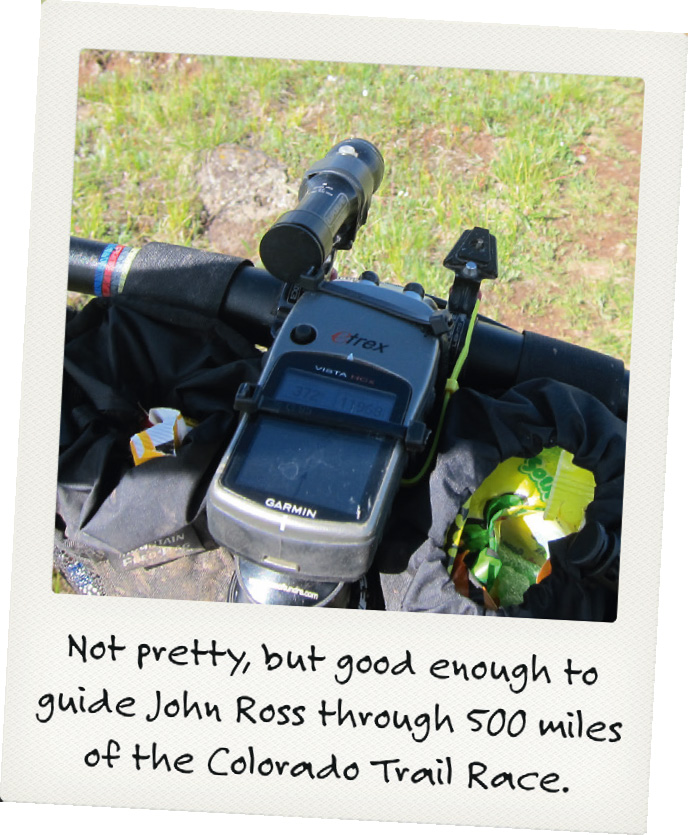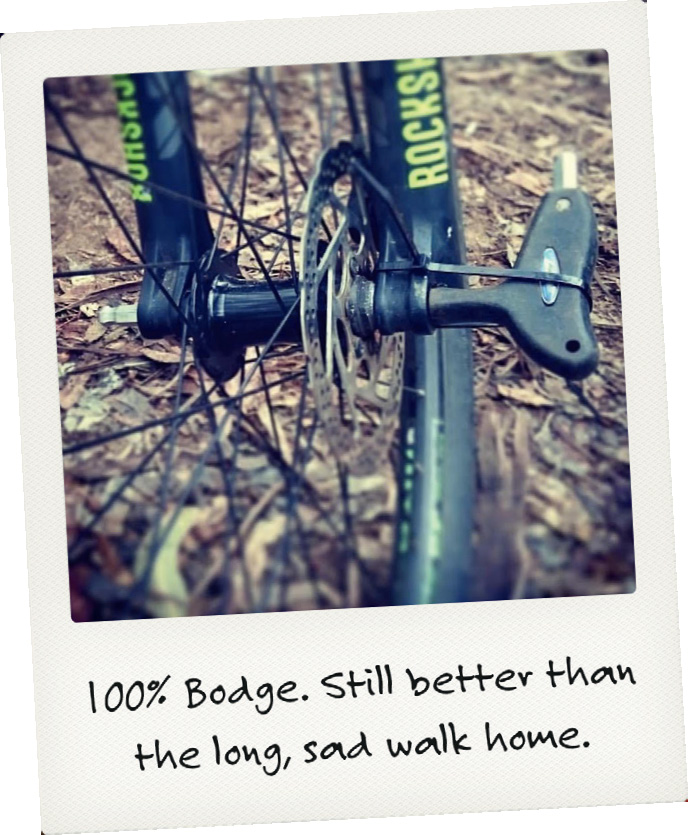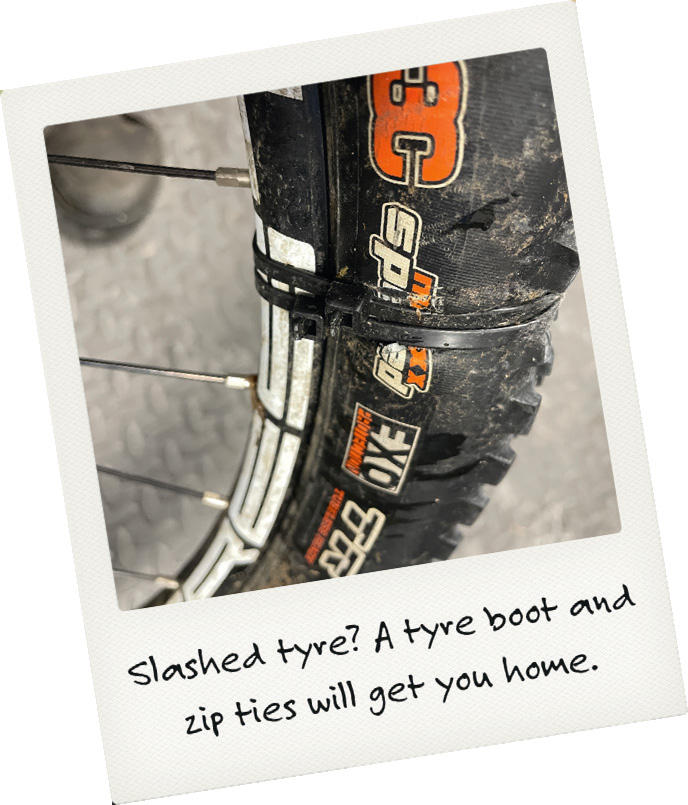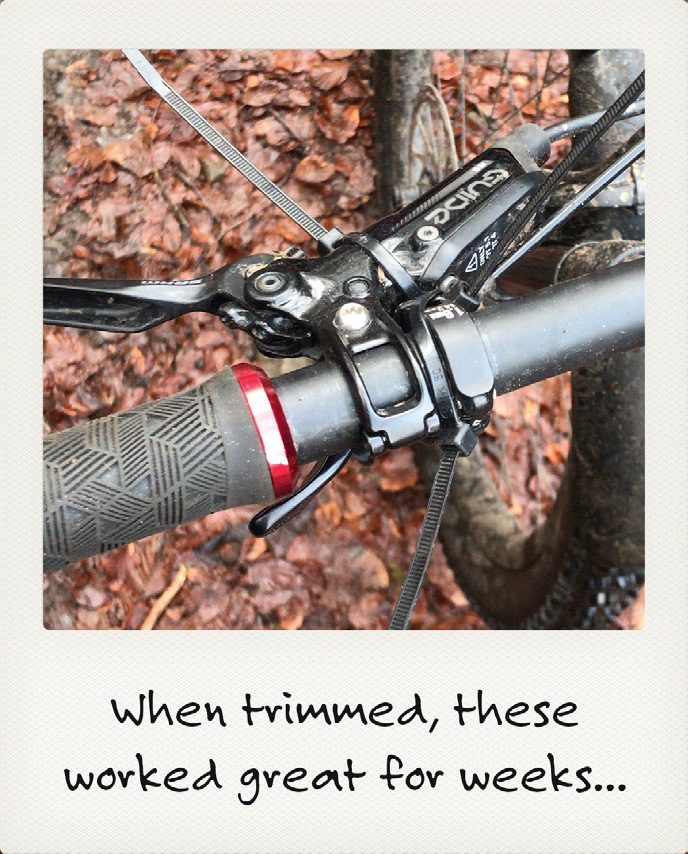Zippity Doo-Dah
Chipps would like to lead you in praise of the humble cable tie.
Words Chipps Photography as credited
Every mountain bike guide seems to have two different tool rolls and two different first aid kits. The first kit, marked clearly with ‘Tools’ will contain a shiny multi-tool, a new tube and some tube patches. The first aid kit will have some plasters, a neat bandage and some safety pins. Look deeper into their packs, though, and you’ll find an unlabelled tool roll and alternate first aid kit. The ‘real’ first aid kit will be full of gaffa tape, tampons and clingfilm, while the ‘real’ tool roll will have the tools of the professional bodger: more gaffa tape, mole grips, toothpaste tube tyre boots, a knife and zip ties. Lots and lots of zip ties.
Latest Singletrack Merch
Buying and wearing our sustainable merch is another great way to support Singletrack
The zip tie is such a ubiquitous piece of every mountain biker’s kit that they don’t even register. There seems to always be a handful of them in every riding pack, or else they’re already being used creatively to hold things to other things, reusable if the need arises – and arise it will…
Ask any mountain biker who’s been riding trails for more than a couple of years and they’ll all have stories of the ride that was saved by the humble zip tie/Ty-Rap® cable tie, so I figured it was time that we applauded its majesty and ability to save the moment when all hope is lost.
What when?
Here’s a cocktail party snippet that’ll be sure to get you invited back. Would you like to guess when the zip tie dates from? It’s not something that anyone really thinks about as zip ties have always been around, haven’t they?
The original patent application for the Ty-Rap® was made in 1958 and it came about as a solution to fixing wiring looms in aeroplane wings. Before the zip tie, these bundles of control and sensor wires that ran down plane wings were tied together with waxed string – something that wasn’t that great for long-term durability, or for the hands of the factory workers trying to hand-tie hundreds of sticky string knots every day. The zip tie, with its quick one-way tightening method, solved that.
The company that originally patented the zip tie, Thomas & Betts, is still around and it still offers hundreds of variations of the Ty-Rap® in various sizes, materials and end-uses. There are your basic zip ties in every length and width imaginable, there are chemical-resistant ones, bacteria-resistant ones, extreme environment ones (rated from -60°C to +170°C) and even stainless steel versions that use a captive ball-bearing to secure the metal tail quickly and permanently (not something to jokingly put around a finger. Don’t ask me how I know!).
It’s always been lurking in the background
As long as there’s been mountain biking, there have been zip ties to repair the bits that normal multi-tools can’t. I’ve used them to fix a slashed tyre to a rim and keep the tyre boot from herniating out. I’ve repaired CamelBak straps, kept broken shifters in place and made creative loops to guide brake hoses when the original mounts had snapped off. I’ve even seen a Hollowtech II crank tensioned enough with zip ties (in the absence of its missing crank cap) to allow its pinch bolts to keep it on the spindle for the rest of the ride. Pete Tomkins from Crud Products introduced many of us to the concept of the reusable zip tie, freed by a simple tab on the ratchet that allowed a Crud Catcher to be mounted again and again rather than risking stabbing yourself in the palm with the knife you’re trying to tease a non-reusable tie open with. Again, don’t ask.
Any mountain bike guide will have a pocket full of them in their pack. A quick ask around some of my more experienced guiding friends brought up a number of creative uses of the zip tie…
Rich Martin, Cyclewise
As you know, as a British Cycling Level 3 leader, we never leave home without zip ties: they’re lightweight, cheap and can pretty much fix anything.
The pictures all show genuine fixes with the zip tie saving the day, or at least saving a long walk home. It’s also a great problem-solving bit of kit that will feature in most quick fixes.
The most common use for them is on wheels and more specifically spokes. Used to help tension a Kevlar spoke or some other form of replacement spoke. If not spokes, then used as a brace around the entire wheel when the tyre is split. Combined with some gaffa tape and a toothpaste tube, they help keep the inner tube and toothpaste tube outer casing from popping out. Secured firmly with the ends cut off, zip ties provide a solid fix that should mean you can continue the ride as planned.
Finally, a special picture of a client who stripped the threads in his thru-axle and, therefore, would have had his wheel fall out if it wasn’t for, you guessed it, a couple of zip ties and 12mm Allen key. Proper fix that saved a long walk home.
Phill Stasiw of MTB Wales has his own share of stories:
Other than the usual torn shoe, of which we have had a few, the most notable was many years ago. A pair of stanchions in a set of forks came adrift, leaving the wheel and lowers on the floor, only connected via the brake hose (luckily with no serious injury). So, ta-dah! Two zip ties to the rescue – one positioned either side of the crown race and under the brace on the lowers. It held down long enough to get back.
There was also a dodgy Garmin watch strap repair for a weekend. Wasn’t coming off quick, that’s for sure.
The most dodgy fix was zip-tying a cassette to the spokes after the freewheel had gone, making it a fixie in about fifth gear. Thankfully this was a personal ride in Elan Valley. Sketchy ride back, but it worked!
Praise be!
It’s rare that you’ll use a zip tie for tying cables, although it does occasionally happen. Usually the appearance of a zip tie (or a handful of them) signals that there’ll be some ingenuity ahead, probably some borrowed or bodged components, maybe a stick or an Allen key used for bracing, and a Leatherman (or nail clippers) to finish off sharp ends and to pull everything snug enough to get you home, get you down, or get you on your way for the next week until you can get either home or to a proper bike shop.
Creative use of a zip tie is a rite of passage for every mountain biker. An effective bodge with a zip tie can mean the difference between a sad walk home and a great ride with a story to tell.
Know, though, that a proper bike shop will also have its own bountiful supply of the magic ties, right next to the big hammer and the cheater bar. But that’s for another time.
In the meantime, I invite you to celebrate the humble zip tie (or Ty-Rap if you have access to the original source) and to appreciate how this simple nylon band has, for more than 60 years, helped make wheels whole again, kept shifters shifting and stopped shoes from falling off feet.
Zip tie, we salute you!









Story tags





